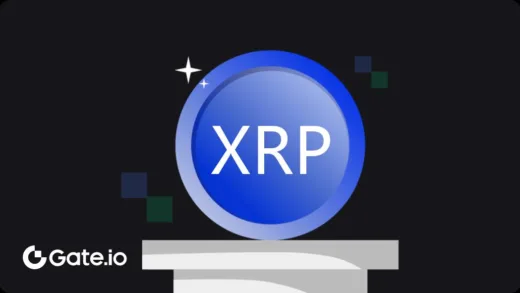Bitcoin’s price has seen a modest increase following the release of the U.S. Federal Reserve’s July meeting minutes, which indicate a potential interest rate cut in September. This news has been eagerly anticipated by investors and market analysts.
As of the latest data from CoinGecko, Bitcoin is trading at $60,484 BTC/USDT, reflecting a 2% rise over the past 24 hours. Ethereum, the second-largest cryptocurrency, has also experienced a slight gain, now trading at $2,605 ETH/USDT on Gate.io, a 1.8% increase.
The anticipation of the Federal Reserve potentially “easing policy” in September has been a key driver behind these movements. Investors are closely watching the central bank’s actions, as any indication of a shift towards looser monetary policies could have significant implications for the broader financial markets, including cryptocurrencies.
Such a policy adjustment could involve reducing interest rates or other measures designed to stimulate economic activity. These steps are often seen as bullish for assets like Bitcoin and Ethereum, which some investors view as hedges against inflation and currency devaluation.
Watching over BTC price
While the increases in Bitcoin and Ethereum prices are currently modest, the overall sentiment in the market remains cautious yet optimistic. Traders and analysts alike are keenly awaiting further announcements from the Federal Reserve, as these could set the tone for the remainder of the year in the cryptocurrency space.
The meeting minutes revealed that a majority of Federal Reserve officials were in favor of reducing interest rates if upcoming economic data aligns with expectations. “Most participants noted that, should the data continue to meet expectations, it would likely be appropriate to ease policy at the next meeting,” the minutes stated.
All attention is now focused on Federal Reserve Chair Jerome Powell, who is scheduled to speak at the Jackson Hole Economic Symposium in Wyoming on Friday. Powell is expected to provide more details regarding the timing and extent of the anticipated rate cuts. The Federal Reserve initiated aggressive rate hikes in 2022 to combat the highest inflation levels seen in four decades, a consequence of the economic fallout from the Covid-19 pandemic.
Initially, these rate hikes negatively impacted both stocks and cryptocurrencies, as investors typically shy away from riskier assets when borrowing costs are high. However, over the past year, such assets have rebounded, particularly due to the rapid advancements in Artificial Intelligence and the approval of spot Bitcoin ETFs, which have spurred significant investment in U.S. equities and the crypto market.
The Fed has been working towards bringing inflation down to its 2% target. According to the minutes released on Wednesday, progress is being made towards this goal. “Participants observed that inflation had moderated over the past year but remained elevated, with recent months showing further progress towards the Committee’s 2 percent inflation objective,” the minutes outlined.
Rate cuts to push BTC up
Rate cuts by central banks, such as the U.S. Federal Reserve, can have a significant impact on the price of Bitcoin (BTC) and other cryptocurrencies. These impacts primarily stem from how rate cuts influence broader financial markets, investor behavior, and economic conditions.
When a central bank decreases interest rates, it reduces the cost of borrowing. This often leads to increased liquidity in the financial system as businesses and consumers can borrow money more cheaply, leading to more spending and investment. For investors, lower interest rates tend to make traditional fixed-income investments like bonds less attractive because they offer lower returns. As a result, investors may seek higher returns by moving their money into riskier assets, including stocks and cryptocurrencies like Bitcoin.
Bitcoin, often considered a hedge against inflation and currency devaluation, tends to benefit from such conditions. With lower interest rates, the opportunity cost of holding non-yielding assets like Bitcoin decreases. Investors might be more willing to allocate capital to Bitcoin, expecting it to appreciate in value as traditional assets offer diminished returns.
Lower rates can weaken a currency, such as the U.S. dollar, as more money circulates in the economy. A weaker dollar can make Bitcoin, which is priced in dollars, more attractive to international investors. This increased demand can drive up the price of Bitcoin.
Finally, rate cuts can signal a more accommodative monetary policy, which can lead to expectations of higher inflation. Given Bitcoin’s fixed supply and its perception as “digital gold,” it often sees increased demand during periods of anticipated inflation, as investors look for assets that can potentially preserve value over time. All in all, rate cuts can increase liquidity, reduce the appeal of traditional investments, weaken the currency, and heighten inflation expectations – all of which can contribute to rising Bitcoin prices.
Looking into 2025
BTC could see significant growth in 2025, with estimates ranging from around $95,000 on the lower end to as high as $160,000 on the upper end. This projection is influenced by several factors, including the impact of the 2024 halving event, which historically has led to substantial price increases 12-18 months after occurring. Additionally, continued institutional adoption, potential regulatory clarity, and the broader acceptance of Bitcoin as a mainstream asset are expected to drive its value higher.
For instance, some forecasts suggest that Bitcoin could peak at approximately $120,000 to $160,000 in 2025, with the possibility of even higher prices if bullish market conditions prevail. Conversely, more conservative estimates place Bitcoin’s potential low around $95,000, acknowledging the inherent volatility and risks associated with the cryptocurrency market.
Overall, while predictions vary, there is a general consensus that Bitcoin will likely experience significant price appreciation by 2025, potentially breaking past the $100,000 mark and possibly reaching new all-time highs.







![[Sponsored] STG Energy Launches Breakthrough Cloud Mining Product to Democratize Crypto Mining 6 STG mining](https://coinfunda.com/wp-content/uploads/2025/02/STG-mining-520x293.webp)
![[Sponsored] Centralhash cloud mining platform easily obtains 100,000 US dollars of 7 central hash](https://coinfunda.com/wp-content/uploads/2025/02/central-hash-512x293.webp)



